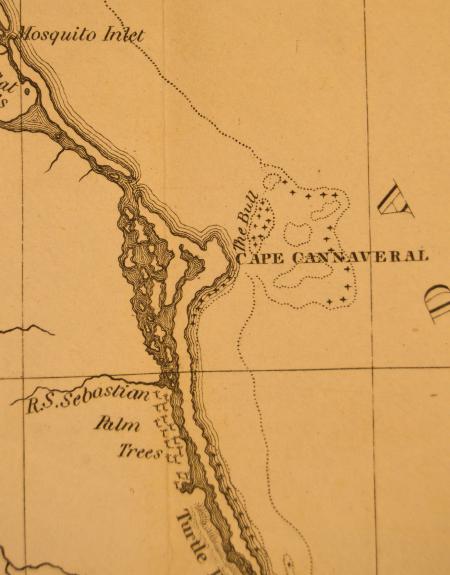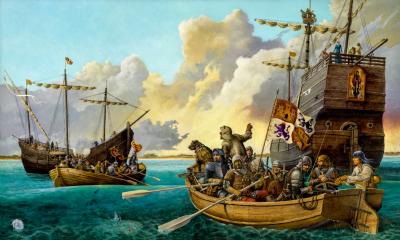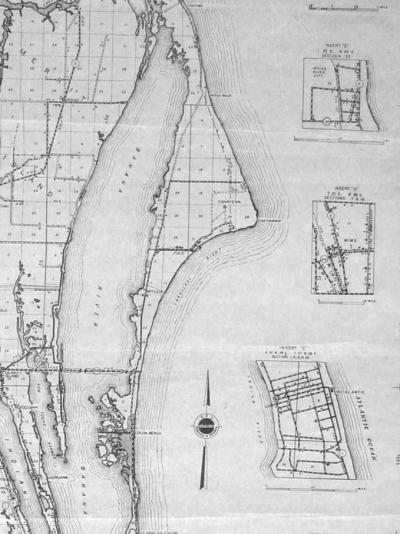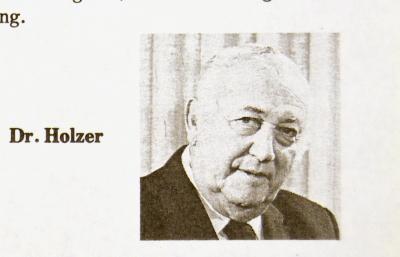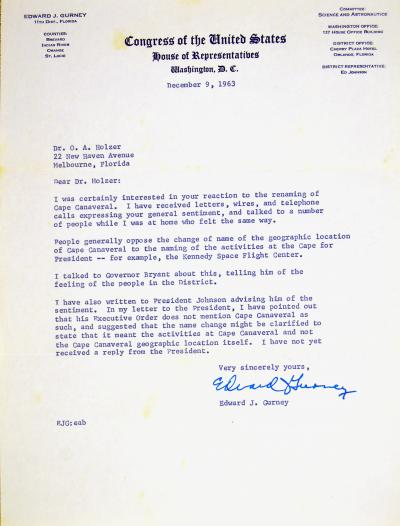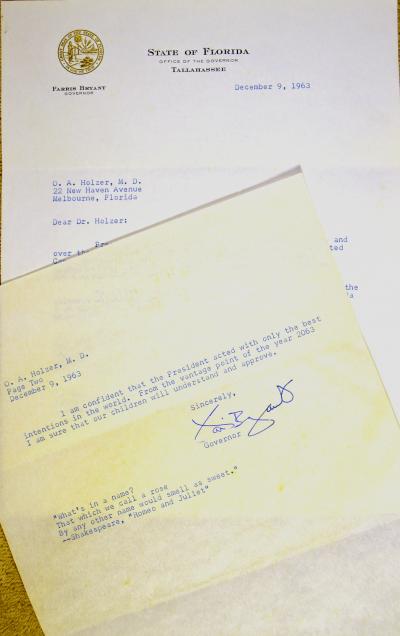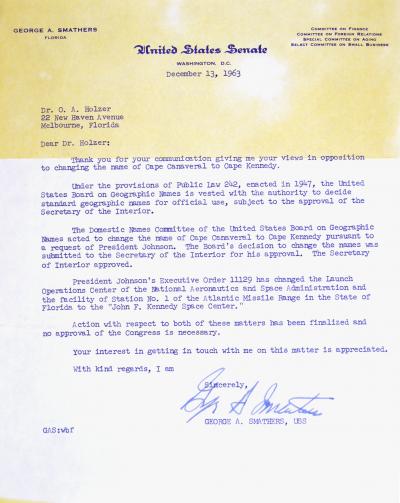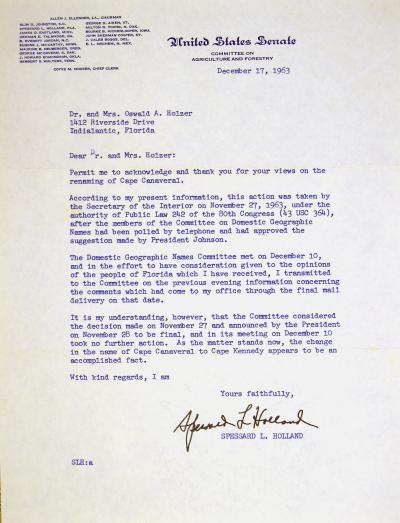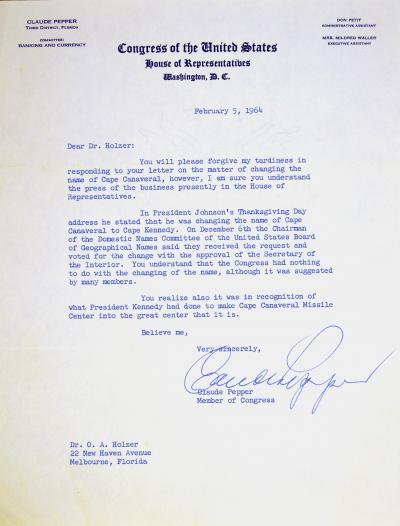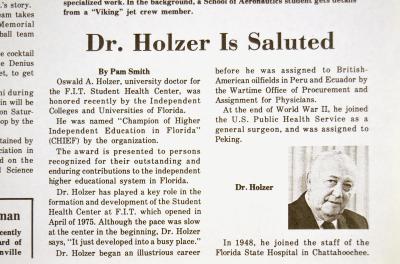The name of Brevard County’s Cape Canaveral is the oldest place name found on any European map of the new world.
It dates from Ponce de Leon’s 1513 expedition when he named Florida “La Florido” or ‘full of flowers’, an event envisioned here by Central Florida artist Jackson Walker.
It stayed “Cape Canaveral” until the days after the November 22, 1963, assassination of President John F. Kennedy. Kennedy was a great proponent of the space program. His speech in September 1962 had set American on course to land a man on the moon by the end of the decade. By that fateful November the National Aeronautics and Space Administration (NASA ) had located its Launch Operations Center (LOC) on the Cape, next to the Cape Canaveral Air Force Station. Clearly, if Kennedy’s vision were going to be fulfilled, it would start there.
At the suggestion of former First Lady Jacqueline Kennedy, President Lyndon Johnson, looking for a way to memorialize and honor his predecessor, issued Executive Order 11129 on Thanksgiving Day, 1963, re-naming the LOC “John F. Kennedy Space Center.”
Days later, it is said after some “encouragement” from Johnson, the U. S. Board of Geographic Names, a federal agency that sets uniform geographic name usage throughout the Federal Government, voted unanimously to change the name of the entire land mass to “Cape Kennedy.”
Everyone seemed to agree it was a fitting tribute to Kennedy. Floridians loved Kennedy; he had visited the state during his campaign and as President, the family even had a residence in Palm Beach. Congress agreed, the Governor and Legislature agreed. Most of the country agreed.
Almost everyone.
But some, like Dr. Oswald Holzer, ( 1911-2000) a Chezk born physician and serious Florida history buff, did not. They knew the history, the 400 plus year heritage of the name Cape Canaveral. Naming the space center was fine; Holzer apparently had links to the space program and had worked on some of the early Gemini and Apollo programs. Denying centuries of a link to our Spanish heritage, not so much.
In the fashion of the day, he wrote letters. He wrote the Governor, Congressmen, Senators, anyone who could have a say.
And he heard back. Some of these letters are now in the archives of the Florida Historical Society’s Library of Florida History.
Eleventh District Congressman Edward Gurney acknowledged he had received similar complaints, and passed them on to the President.
Quoting Shakespeare, Governor Farris Bryant predicted history would approve of the name change.
Senator George Smathers seemed to hide himself in the thicket of the law, to paraphrase another playwright.
So did Senator Spessard L. Holland, calling the name change “an accomplished fact.”
Even the irrepressible Claude Pepper, then a Third Florida District Congressman, was satisfied with the intent of the name change.
The consensus was the desire to honor Kennedy trumped centuries of Florida history, and history would eventually approve.
From the vantage point of that future, we know it didn’t work out that way. The letter writing continued, the opposition grew, thousands of Floridians eventually spoke up, newspapers editorialized for and against, the regional issue began to generate national interest and politicians began to equivocate.
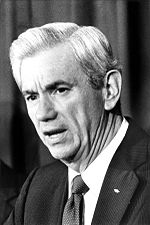
Finally, in 1973 Governor Rubin Askew decided to take action at the state level, signing a measure that said all documents generated by the state would use “Cape Canaveral” when referring to the land mass.
A few months later the Board of Geographic Names voted again unanimously to back the state’s position. The land mass became Cape Canaveral, the NASA facility became the Kennedy Space Center, a compromise that honors both the slain President, and the (now) 500 years of history.
What of Dr. Holzer? The archive has this 1981 article from the Pelican, Florida Institute of Technology’s student paper.
The Florida Tech Student Health Center now bears his name.
